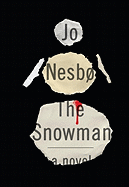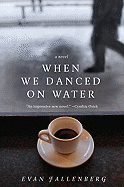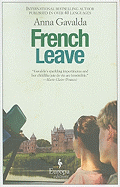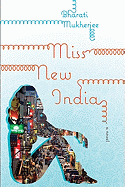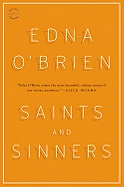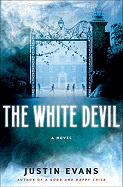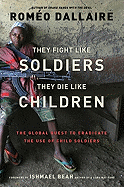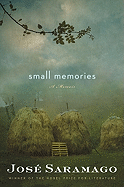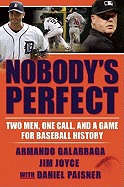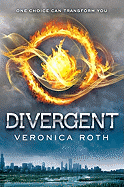Week of Wednesday, September 17, 2025
If you're reading these words, you're special to us. You're the people we at Shelf Awareness hand-selected to view this first issue of our consumer-focused newsletter.
Some of you may already be familiar with Shelf Awareness in its original incarnation as a newsletter tailored to booksellers and librarians. Nothing about that will change, except it will keep getting better. The new Shelf is meant to be a "point of discovery" information source for readers. Regardless of the challenges facing our industry, we know that there are still many readers and book buyers out there who are eager for reviews and other kinds of literary coverage.
As you peruse this issue, you'll see that we're including some of the best of what we already offer, including Quotation of the Day, Shelf Starters and Book Brahmins. But you'll also find our new, expanded review coverage--25 bylined reviews each week (or "12½ reviews in every issue," as we've been joking) of the week's best new releases in multiple categories and genres (including children's reviews)--and Starred Reviews as well.
Eventually you'll see author profiles and other types of book news tailored for the reading public. In the meantime, we hope that each and every one of you will scroll through Shelf Awareness: Enlightenment for Readers with your gimlet eye. What do you love? What do you hate? What do you miss entirely? Would you sign up your mother, best friend, worst enemy for this newsletter (remember: it's free!)? What do you think about the ads, the interface, the graphics?
 Remember,
you're the lucky ones who are getting a sneak peek at this beta issue because
we trust your opinions--but please don't forward this on to anyone else
yet. We are eager to hear your feedback. In fact, we're so eager
to hear it that soon you'll receive an online survey that we hope you'll
complete. If you have questions or any problems, feel free to contact me--and happy reading!--Bethanne Patrick, editor
Remember,
you're the lucky ones who are getting a sneak peek at this beta issue because
we trust your opinions--but please don't forward this on to anyone else
yet. We are eager to hear your feedback. In fact, we're so eager
to hear it that soon you'll receive an online survey that we hope you'll
complete. If you have questions or any problems, feel free to contact me--and happy reading!--Bethanne Patrick, editor
When We Danced on Water
by Evan Fallenberg
A chance encounter at a coffee bar in Tel Aviv rescues two lost souls from the abyss in Evan Fallenberg's (Light Fell) carefully crafted novel When We Danced on Water. Teo, 85, is hardened and domineering, an influential choreographer whose life is riddled with sadness and sorrow. Vivi, a 40-something waitress with latent, "interdisciplinary" artistic talent, is completely stalled in her life and her work. The nature of art is what brings these lonely, disillusioned souls together, but it is also what will tear them apart. When their paths cross, a transformation is sparked in each of their lives--but not before they are forced to resurrect the past and face down long-repressed demons. When Vivi and Teo slowly start to form a relationship that seeps beyond the boundaries of artistic friendship, the reader is drawn and captivated by their stories from the past. Teo was a dancer with great promise, who forfeited love to pursue his career, only to have it stolen in wartime by a Nazi brute, while Vivi, an Israeli soldier, forsook her family and the traditions of her Jewish faith for a lover who would later betray her.
The novel delves into themes surrounding the perils of passion, evil and regret; the transcendent power of art; and the ultimate healing power of love. The sensitivity that Fallenberg brings to the writing devoted to Teo's life as a dancer in the Danish Royal Ballet, in the wings and on stage, is passionately evocative--as are the terrifying scenes of his captivity during the war. In the end, it is Teo's story that takes centerstage and serves to ratchet up the dramatic tension--past and present--for both Vivi and Teo, until the plot unravels into a surprising conclusion of forgiveness and rebirth.--Kathleen Gerard
Discover: The nature of art brings two lonely souls together, then tears them apart. Or does it?
French Leave
by Anna Gavalda, transl. by Alison Anderson
Without a wasted word on preliminaries, author Anna Gavalda (Hunting and Gathering) charges into her humor-laced narrative with a swift, economical style that tells you just enough to get to the next sentence, with only enough time for a quick laugh at her barbed, no-holds-barred take on modern times.
Four siblings are travelling to a wedding: Garance Lariot, the 20-something narrator, and Simon, the older brother and pillar of the family morale, join sister Lola en route, planning to meet their brother Vincent there. When Vincent fails to show up for the ceremony, the other three impulsively take "French leave" from the festivities and set off for the chateau where he works as a guide. They escape from one wedding only to find themselves accidentally caught up in another; they cross paths with a stray dog who knows immediately when he locks eyes with his future owner; and end up having a much better time than they ever could have had with their own relatives.
The narrative unfolds in brisk snatches of dialogue with cinematic swiftness. The exuberance of the Lariots crackles through their words, and their joy in each other's company is so contagious the reader feels lucky to be included. Replete with witty banter and catty repartee, with snotty comments and arch rebuttals, the smart-alecky style is contagious and often laugh-out-loud funny.
Unexpectedly, the Lariot siblings are struck by a magical awareness of how much they mean to each other, of the treasure they share in each other's company, with no guarantee of how long their joy in each other can last. Playing hooky from their social obligations, the brothers and sisters have been granted a moment of grace, captured by Gavalda in spare, simple strokes in a little novel as light as fresh air.--Nick DiMartino
Discover: The story of four siblings playing hooky from a family wedding, told in brisk snatches of dialogue with cinematic swiftness.
Miss New India
by Bharati Mukherjee
Nineteen-year-old Anjali Bose lives with her parents in the rural hinterland of Gauripur under the strict rule of Indian tradition. Her father is eager to marry her off to a suitable fiancé, even though her older sister's arranged marriage has resulted in a divorce and single parenthood.
Anjali chafes at these traditions, but finally agrees to meet one man who seems all spit and polish--until while on a drive in his "very nice car," he forces himself on her and Anjali becomes a girl on the run.
Decamping from home in the middle of the night, Anjali flees to the home of her former English teacher, Peter Champion'. The worldly Champion encourages her to move to Bangalore and take a job in a call center. Anjali--now "Angie"--experiences culture shock as striking as any travelogue's version of the same: Bangalore's dialects are many and foreign, its young women modern and free, and the crumbling ruin into which "Angie" moves holds tattered bits of the old "Raj."
Mukherjee goes Bollywood after Angie arrives in Bangalore (a series of improbable events catapults her from a new lover's arms to prison to an opulent home to a canoe trip back to her old school, all within eight months), and leaves quite a few loose ends–but she has captured the tension between old and new, traditional and postmodern, obligation to family and to self--that is India today. Two of the book's mantras are: "Nothing in the world is as it seems--it's all light and angles" and "We're all Photoshopped." Believe it, as you sign on for the ride.--Valerie Ryan
Discover: A traditional Indian girl leaves her backwater village for the bright lights of big-city Bangalore.
Saints and Sinners
by Edna O'Brien
Joyce, Trevor, Toíbín--one could be forgiven the belief that all of the greatest Irish short story writers are men. But a few hours with Edna O'Brien's latest collection, most of them set in her homeland, will put lie to that unwarranted conclusion.
One of O'Brien's preoccupations in the 11 stories of Saints And Sinners is the frictions that arise from Old World class differences. In "Inner Cowboy," she tells the story of Curly, a simple young man who's a witness to an environmental accident and soon becomes ensnared in the effort to conceal it. "Green Georgette" is the wickedly funny account of a disastrous afternoon tea a village woman and her daughter attend as guests of the local banker's pretentious wife.
Though the personal dominates the political in these stories, O'Brien doesn't refrain entirely from exploring a subject that's an unfortunate fact of Irish life. "Black Flower" obliquely touches on Ireland's history of sectarian violence. Nor do all of O'Brien's stories follow a conventional path: "Madame Cassandra" is the stream-of-consciousness rant of a woman on the way to consult a fortuneteller, seeking to confirm the depth of her husband's infidelity.
The collection closes with two strong stories that share the theme of family schisms and illustrate O'Brien's skill when it comes to matters of the heart. "My Two Mothers" sketches the conflict between a mother who "insisted that literature was a precursor to sin and damnation" and her daughter, a writer who "believed it was the only alchemy there was." In "Old Wounds," one cousin traces the course of a family feud, realizing in the midst of it that "with so many dead, there was no need for estrangement anymore."
Marrying deceptively simple prose to the gift of keen insight into the lives of her complex characters, Edna O'Brien reaffirms her place in the company of Ireland's most esteemed writers. --Harvey Freedenberg
Discover: Edna O'Brien, in her latest collection, proves once again that she's one of of Ireland's short story masters.
The Year We Left Home
by Jean Thompson
With a war at the beginning (Vietnam) and one at the end (Iraq), Thompson frames an American family's path through 30 years of life in America, from 1973 to 2003. This portrait of the Erickson family in Grenada, Iowa, alternates viewpoints among family members and their cousin, Chip, a damaged vet of the Vietnam War.
The story opens with Anita's wedding to Jeff. She is the eldest of four children; the others are Ryan, Blake and Victoria. In vignettes that capture important as well as ordinary moments in each of their lives, a picture begins to build about who they are, what they want and what they will eventually settle for. The constant thread throughout all the stories is that these are basically good-hearted individuals, often saddled with more than they are equipped to handle. When Ryan buys the farmhouse that once belonged to Uncle Norm and Aunt Martha, prototypical examples of the classic American farm couple--thrifty, hardworking, honest, church-going and long-suffering--Blake says of them: "They didn't think in terms of happy."
Each of the Erickson children has thought in those terms, however, and mostly have come up short in the happiness department. Each of them has endured a difficult situation in the hope that it would change.
If this all sounds too, too grim, it isn't. In Thompson's (author of the story collection Do Not Deny Me) engaging style, each of these characters has a life filled with much humor, insight, reconciliation and understanding. At story's end, the next generation is starting to leave Iowa. Who knows what's ahead for them? Thompson keeps us hoping for the best for her characters, as she gracefully chronicles events and shows us interior lives.--Valerie Ryan
Discover: A wry, humorous, beautifully nuanced novel filled with insight.
Mystery & Thriller
The Snowman
by Jo Nesbø, transl. by Don Bartlett
Although Scandinavian crime writers are mostly viewed as a group, there are distinct regional differences in the texture and mood of their novels. And while Norwegian author Jo Nesbø does provide the same edge and grit that have made his Swedish counterparts Stieg Larsson and Henning Mankell so popular, there is a level of intelligence and psychological complexity in his work that makes it stand out in this increasingly crowded field.
The Snowman is the seventh installment in Nesbø's series featuring Det. Harry Hole, but only the fourth to be published in the U.S. However, as with the best series novels, familiarity with the protagonist is not necessary in order to enjoy this one. The story begins with Oslo's first snow of the season. A young boy wakes in the middle of the night to find that his mother has disappeared. In her place is a particularly creepy snowman. It's a pattern that will be repeated in the days to come--more missing women, abandoned children and increasingly gruesome snowmen. The case falls to Harry Hole, a tortured alcoholic (recently on the wagon) who is Norway's only expert on serial killers.
Along with his growing conviction that the killer is manipulating him, Hole must deal with a huge load of personal and professional trials. His ex-girlfriend and love of his life, Rakel, has reentered his life, despite being engaged to another man; his urge to drink is escalating; he is vexed by Katrine Bratt, the alluring but very tightly wound detective assigned to his team; and his apartment is full of mold. As the bodies (and body parts) pile up, so do a veritable North Sea of red herrings. The point of view shifts from Hole to the victims (and the herrings), but no tension is sacrificed in the service of this additional and outstanding psychological shading. In short, The Snowman offers readers all the chill and darkness they have come to love in Scandinavian noir--and then gives just a little bit more.--Debra Ginsberg
Discover: An edgy, intelligent and very creepy thriller from Norwegian writer Jo Nesbø that stands out in the field of Scandinavian crime fiction.
Science Fiction & Fantasy
The White Devil
by Justin Evans
The day after protagonist Andrew arrives at Harrow, a centuries-old boarding school on the outskirts of London, he finds the only boy he's made friends with dead outside the school grounds and a skeletal figure with a cough that "combined the bark of a sick animal with a wet, slapping sound" standing over the corpse. That figure mysteriously vanishes, and it's determined that the boy died of unusual but natural causes. However, Andrew's dreams have been invaded by a similar apparition, bringing with it visions of violence and desire rooted in the school's past.
Meanwhile, the school's lone female student has set her sights on Andrew, noting his eerie resemblance to the young Lord Byron (a 19th-century “Old Harrovian,” as the school’s alumni are termed). She touts him to headmaster Piers Fawkes, commissioned to write a school play about Byron's life. Andrew, cast as lead, learns that his role appears to be connected to his menacing dream invader. He confides in Fawkes and the school librarian; unfortunately, the headmaster’s initial reaction is to string the situation along, hoping it will stir up enough drama to revitalize his dwindling literary career.
Evans ratchets up the suspense expertly, although his grip on the novel's voice occasionally falters. Most of the story is told from Andrew's or Fawkes’s perspectives; when Evans brings in other points of view, they almost always derail the otherwise precisely calibrated tone. You'll need a high suspension of disbelief to accept how Andrew's supernatural tormentor asserts itself in reality, but gradual revelations about ghostly motivation dispel those doubts. Once the story kicks into full gear, The White Devil becomes an authentic page-turner that may well be devoured in one sitting.--Ron Hogan
Discover: Evans comes up with a plausible theory for one of the great unanswered questions about Lord Byron's early life and integrates it with a chilling contemporary horror story in the vein of Michael Marshall.
Nonfiction
They Fight Like Soldiers, They Die Like Children
by Roméo Dallaire; foreword by Ishmael Beah
Roméo Dallaire (Shake Hands with the Devil: The Failure of Humanity in Rwanda) led the international peacekeeping mission in Rwanda after the Arusha Peace Agreement was brokered to end civil war in 1993. "I was given strict orders from the highest commanders of the UN not to act, merely to observe," he writes about his assignment. As a career Canadian Armed Forces officer, Dallaire knew about chain of command and obeying orders. When confronted with the massacre of Tutsis and Hutus in April 1994, however, he disobeyed his orders and saved the lives of some 30,000 people. He knew the order not to act was immoral in this case; 800,000 people died in that genocide as others stood by. From that experience, a new, extremely challenging journey began for him.
The horrors of Rwanda expanded in Dallaire's mind far beyond those statistics of slaughter as he considered that children had been used as soldiers in the civil war and the genocide. Attempts to reconcile his sense of childhood with the hate and violence he saw in the eyes and actions of those children led him to ask questions he felt others were avoiding about creating, using, disarming and reintegrating child soldiers. Wrestling with those questions has obsessed him for 15 years. His findings are as important and morally central to our age as they are profoundly disturbing. In Dallaire's tough, pragmatic language, children as soldiers "have military capabilities, net operational advantage and tactical effectiveness" that make them attractive to adults commanding operations. And he makes clear that we need to "understand how they operate as a weapon system... so that we can successfully neutralize their effect."
Dallaire has discovered that discussing children in terms of being a "weapons platform" can itself lead to a complete shut down of dialogues about eliminating the use of children as soldiers. To counter such sensitivities and to build bridges to keep all parties working for effective solutions, he has spearheaded the Child Soldiers Initiative; the daunting task and the progress made so far are awe-inspiring.--John McFarland
Discover: A profoundly important survey of the challenges facing eradication of the use of children as soldiers in armed conflicts around the world.
Biography & Memoir
Small Memories
by Jose Saramago, transl. by Margaret Jull Costa
Nobel Prize-winner Jose Saramago found a touching way to say goodbye to his readers in this short, fragile, posthumously published memoir. Saramago describes growing up in the rustic, ancient Portuguese village of Azinhaga, taking us back through "the illegible pages of destiny," from the thrill of first learning to read to the horror of witnessing his father beating his mother.
Saramago, meaning wild radish, was not a family name but a nickname by which his family was known in the village, made official by a drunk clerk at the registry office. That's just one of the old handed-down tales that Saramago loves, but while he treats us to his very brief adventure hooking the biggest fish in the river, he also shares tragedies like his four-year-old brother's death.
Saramago's family survived in a world of barely enough money, where the house blankets were pawned in the summer only to be bought back in cold weather. The book abounds in poignant moments, like when Saramago's grandfather, a few days before his death, embraces the trees in his garden one by one to say goodbye and thank them for their shade and fruit.
His memory disoriented and faltering as he attempts to peer back at a childhood 80 years in the past, Saramago allows us to join him in savoring "the small memories of when I was small." Sometimes not recalling the exact order of things, the great writer returns to events again to deepen them with new details, with "the courage to turn the coin over and show you the other side."--Nick DiMartino
Discover: A posthumous memoir by Nobel Prize-winner Jose Saramago, where he savors childhood memories in touching vignettes.
Sports
Nobody's Perfect: Two Men, One Call, and a Game for Baseball History
by Armando Galarraga and Jim Joyce with Daniel Paisner
"I do not always like this, when another player is hungry. I like it when I am the only one who is hungry. Or when I am the most hungry," says Detroit Tigers pitcher Armando Galarraga of his feelings about facing Trevor Crowe, the first batter up in the June 2, 2010, game he pitched against the Cleveland Indians. Crowe was soon out--and so began the game that will live in legend.
Galarraga continued to strike out batters and be backed up by his teammates' astonishing plays until, at the top of the ninth, he found himself just one out away from a perfect game. Galarraga sizes up Cleveland's Jason Donald: "I do not trust this rookie... He has something to prove, just like me."
As Galarraga tells it in this mesmerizing and emotionally complex revisit to that now-infamous game, the tension was nerve-racking. Then Donald connected with a pitch and ran, hell-bent on being the first man to reach base in this so-far perfect game.
A Detroit player fielded the ball and threw it to Galarraga, who was running to first base to tag Donald. Galarraga was feeling triumphant as he caught the ball and touched his foot to the base: the perfect game was his! But then first-base ump Jim Joyce made his infamous call: "SAFE!"
Nobody's Perfect achieves the remarkable feat of taking us inside the heads of both the pitcher and the umpire at the moment of that call, and during everything leading up to it. In alternating chapters, Galarraga and Joyce reveal what was behind their opaque game faces with surprising candor. Every revelation deepens our appreciation of their love of the game and seriousness of purpose in doing their jobs; with thrilling immediacy, Nobody's Perfect delivers the personal stories behind the public face of a game that will have its own page in baseball history.--John McFarland
Discover: A thrilling, emotionally complex revisit to the legendary almost-perfect baseball game of June 2, 2010.
Children's & Young Adult
Divergent
by Veronica Roth
Imagine a future Chicago that is recognizable only by the remains of the former Sears Tower and Hancock Building. That is the setting of this harrowing, haunting first novel. Beatrice Prior has grown up in the Abnegation faction, where her father serves as a council member. In this dystopian society, the citizens are organized into five factions that were established "to eradicate those qualities they believed responsible for the world's disarray." Now that she is 16, Beatrice must choose which faction to call home. First she submits to an aptitude test, which will indicate the faction best suited to her character traits. Beatrice's test results are "inconclusive"; she could go with any of three factions. But her test administrator tells Beatrice that her results mean she is "Divergent.... Being a Divergent is extremely dangerous," she warns. Beatrice must not confide her test results to anyone.
Roth shows Beatrice's fascination with Dauntless from the first pages. She's drawn to their reckless leaps from moving trains, their black attire and tattoos, as opposed to her plain haircut and gray uniform, which signals the selflessness of Abnegation. So the heroine's decision to leave her family, while difficult, is not a surprise. Instead, the surprises come from the new trappings "Tris" takes on in Dauntless and her process of figuring out which parts of her old self she wishes to keep and which to shed. As the guards of society's borders, the Dauntless initiation is violent and sometimes mentally abusive. Like Katniss in The Hunger Games, Tris must find her own moral compass. To her astonishment, Tris discovers that bravery and selflessness are "often... the same thing." Riveting.--Jennifer M. Brown
Discover: In a dystopian Chicago organized into five factions, 16-year-old Tris must figure out where she belongs.


